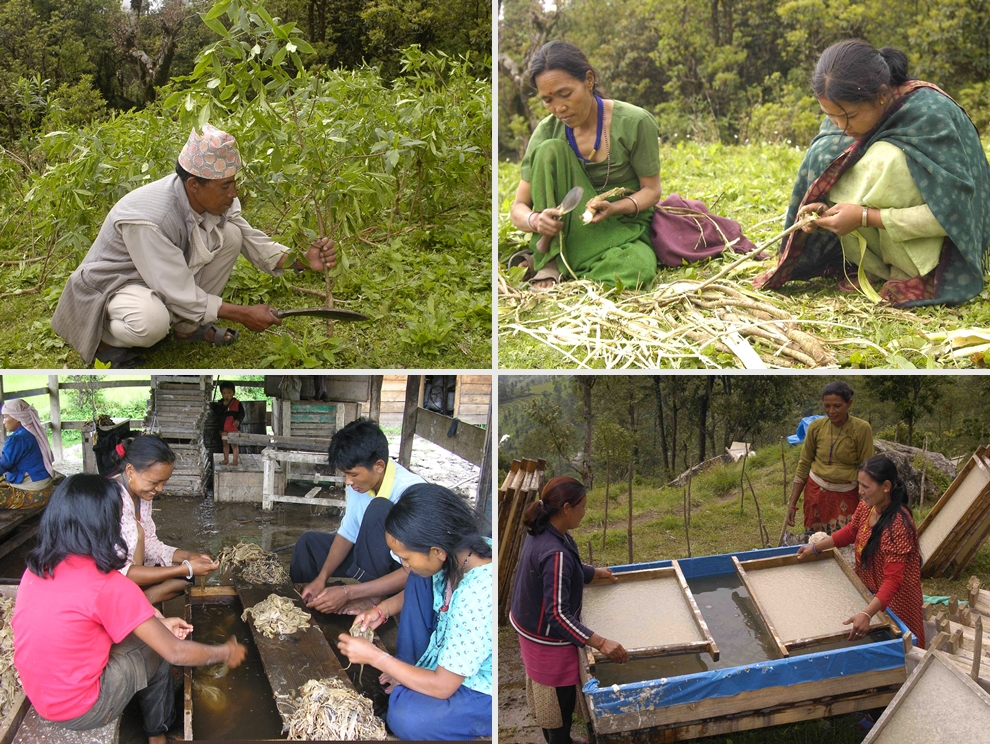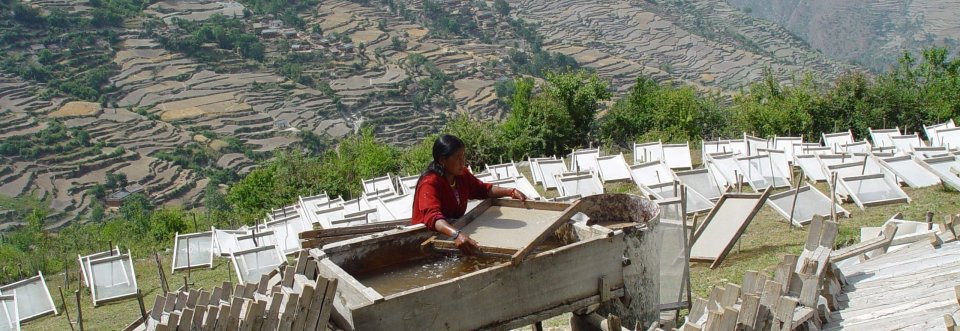Sustainable use of Lokta in Parbat district, Nepal
A pilot project for community-based forest management
The nature conservation organisation Asia Network for Sustainable Agriculture and Bioresources (ANSAB) has been supported by the foundation Manfred-Hermsen-Stiftung since 2006 for the strengthening of Environmentally Sound Forestry. In this pilot project, ANSAB and MHS tested local self-government, which explicitly includes the protection of endangered plant species, such as 'Lokta' (Daphne spp.).
Background
The Daphne species has been used for many hundreds of years to produce high quality paper. It grows in medium and high altitude forests in almost all of Nepal and is harvested without being cultivated. High demand and destructive harvesting methods have led to increasing threats to the Lokta populations and their habitats throughout the country. Besides overharvesting, also overgrazing, slash-and-burn farming, forest fires and improper tree pruning also contribute to the threat. However, the underlying causes are a lack of community forest ownership and institutional mechanisms to regulate forest management, low ecological knowledge and training, insufficient experience in forest management and poverty caused by the lack of alternative sources of income. These problems are well known for a long time, but the development and implementation of mechanisms to fight the continuous destruction of Lokta and its habitats is progressing very slowly.
The project
Endangered crop species such as Lokta have good economic potential and can contribute to raising the income of local gatherers and farming families, but the sustainability of income depends directly on the sustainability of area and species management (Lokta). We supported local communities and other key groups involved in sustainable resource use, both technically and through training, and focused on working with local forest user groups. Within the pilot phase, the project worked with 1-2 forest user groups and facilitated them to manage Lokta, its associated species and habitats, in a sustainable way. The project adopted a participatory approach in all its activities, from planning to implementation and monitoring. Measures such as the extension of resource use rights for the local population, empowering them with information and knowledge of sustainable forest management, conservation and institution building ultimately also served to protect natural resources and related habitats.
After a successful pilot phase, the project was extended in 2007/08 with further forest user groups.
For further information please visit the website of ANSAB.

